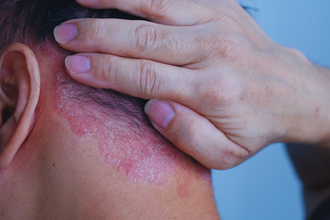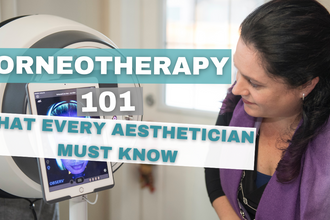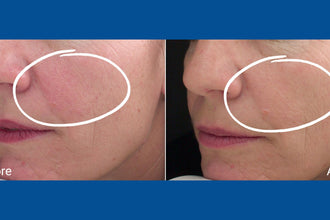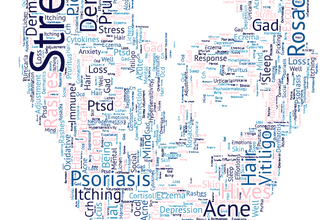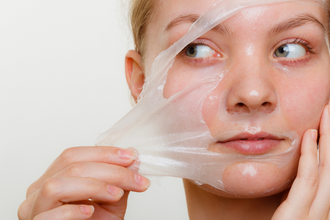
Skin Trends, Tools and Myths, Oh My!
There are tons of viral skin care trends and tools making their rounds on TikTok and Instagram.
As a skin expert, I cannot even count how often I have clients ask me my opinion on if the tools are worth investing in or not. So, it’s time to drop it like it’s hot - my opinion that is!
In this blog, I am going to discuss a few of these viral ‘tools’.
- Microfibre cloths
- Stone rollers, GuaSha Stones, and Ice Globes
- Microcurrent tools
- MicroNeedling (aka dermal needling or collagen induction therapy)
- LED (light-emitting diode)
Since the approach to skin is based on corneotherapy, of course, my recommendations are always to choose tools, products, and treatments that preserve the integrity of the epidermis. Let’s get into it!
Microfibre Cloths:
I generally like cloths, and always have. There is something so cozy and calming when incorporating a cloth that is soft and gentle into your daily skincare ritual.
Microfibre cloths are great for removing make-up and dirt from the skin and can be used with or without a cleanser. It is gentle and does not damage the skin. In fact, when I see clients with highly reactive skin, I often start them off with a microfibre cloth to start their skincare journey with me and add a cleanser later.
It is a good idea to have two or three so you can have one in use, one in the wash, and one ready to go. In fact, I love it so much that I had some custom-made and clients love them. Since they are not specific to a particular skin type or condition, these also make great gifts (hint, hint).
Stone Rollers, GuaSha Stones, and Ice Globes:
These are all very popular at the moment, and with good reason! These tools are great for an immediate ‘pick me up’ and do not require a Ph.D. to use.
These tools can cool and calm the skin, decrease puffiness (temporarily), and encourage microcirculation which supports the lymphatic system. Using the right techniques - and particularly when professionals use these tools - can create a visual ‘lift’ of the skin.
Now, don’t get too excited because the ‘lifting’ is usually temporary, and the skin still needs to be supported by proper skincare to address your skin concerns. At the same time, I will take a temporary calming, de-puffing, and lift any day! It is lovely and soothing, and some research states that it also helps product to absorb in the skin. For me, I choose high-quality products that have great carriers in the formulation to facilitate absorption and don’t rely on tools to help with absorption.
Microcurrent Tools:
The benefits of microcurrent is the production of the chemical adenosine triphosphate (ATP) by passing a soft and gentle current through the skin into the facial muscles. By increasing the production of ATP, it can accelerate cellular metabolism, stimulate protein synthesis, and promote collagen and elastin. In short, we get the collagen and elastin that equals anti-aging. It also improves microcirculation and is a great non-invasive option for smooth, plump and tighter skin.
However, it is a bit like exercise. You have to do it often to see the benefits. A series of professional treatments 1-2 times a week is recommended to start with and then maintain it with a treatment every 4-6 weeks. At-home tools can help as well and are more convenient due to the frequency required, but it is not quite the same as a professional service. Do you have anything to lose? No, I don’t think this treatment is negative for the skin at all. In fact, professional treatments render great results if consistency is there, but the home versions require a lot of consistency for results that I personally don’t feel are worth the effort at home.
So while I love microcurrent, you will find me in a clinic receiving it from one of my colleagues. It is like the stone rollers, a fun tool to have for that special event you want to look great for. Let me know if you use one at home!
MicroNeedling (aka Dermal Needling or Collagen Induction Therapy):
Microneedling is one of my favourite treatments. If you have been following my work for a while then you know this one is my top corrective treatment for a variety of skin concerns.
Microneedling creates little microchannels through the skin triggering a healing response that helps promote the production of collagen and elastin without a heat source (like a laser). The type of collagen produced is different than that created by laser technology and the risks are less, especially in darker skin tones and skin that tans easily.
In layman's terms, it is like a super amazing Instagram filter that smooths and brightens the skin over a series of treatments. In-clinic treatments typically use longer needles and are a must if treating scarring. But for general ‘fine tuning’ the home version is great. Again, consistency gets the results but results build over time.
Home needling clients report they notice skin improvement at around six months of consistent needling at home, and for those who choose professional in-clinic treatments, that same feedback comes around treatment number four or five. Treatments are done monthly (no less), for six treatments and then maintenance treatments can follow.
As you can see I am a fan, but admittedly, not very consistent with doing it at home. While consistency does get better results, my skin is always happy after an impromptu home rolling session anyway. It’s very important to note though that this is not to be used with just any skin care! Quality skin care is a must.
LED (Light Emitting Diode):
LED (Light Emitting Diode) devices are well established in clinical anti-aging and skin-care therapy, as well as in the treatment of a wide variety of skin conditions. When used, the LEDs emit light into your skin. Light photons of specific wavelengths are absorbed by cell components, particularly the mitochondria, triggering a cascade of biochemical reactions. And, did you know that each wavelength, or colour of light, stimulates a specific skin response?
Here are what each colour may be used for:
- Red reduces inflammation, pigmentation, and redness and helps prompt cellular repair and circulation for a more vibrant complexion.
- Near-infrared targets deeper fibroblast cells, stimulating new collagen and elastin production, resulting in plumper, firmer, more youthful-looking skin.
- Blue neutralizes the bacteria that cause the redness and inflammation of acne.
And, LED therapy is a completely natural treatment and does not contain any harmful UV wavelengths; it does not create heat or thermally damage the skin. Partnered with quality skincare, this tool and form of treatment can be extremely effective.
The challenge with LED is again that it needs to be done regularly, and in-clinic treatments are the most effective, but there are some really great products out there these days that allow you to wear the LED like a mask. Guess what Santa delivered to me this year! Oh wait, it was from me to me!
Since I don’t have to stand around and use the tool, I can strap it on and go, it is easy to do and is good for the skin. Buyer beware, however… Those wavelengths are quite specific to trigger the cellular response, so make sure the device you get is not just a mask with Christmas lights inside that will not give you any results! Buy from a reputable manufacturer, or stick to the in-clinic services. One of my partner clinics I work with has a cool LED lounge set up - yes please!!
I would love to know what other skin care trends and tools you are wondering about.
Email info@reneserbon.com or info@dermalsystems.com and let me know!
Written by: René Serbon

